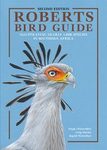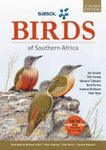About this book
Language: French with English summary
The four Comoro islands are situated between Africa and Madagascar. They are of Miocene volcanic genesis and have never been linked to a continent. The 60 species of birds breeding there (plus about 40 species of accepted migrants and vagrants) are therefore of “recent” arrival in the archipelago.
The birds of the Comoros were listed one hundred years ago by Milne-Edwards and Oustalet (1888). That volume also included pictures of some species, but it is of difficult access and, of course, not up to date. Benson (1960), the only serious later student, was the leader of the British Ornithologists’ Union expedition in 1958. Benson’s study was very complete and is extremely useful, even nowadays, but it is not illustrated.
The present volume results from the Belgian Zoological Expeditions to the Comoros (1981, 1983, 1985) of which the author was the leader. A diagnosis, the status and the taxonomy of all species known definitely to occur in the archipelago are treated and for the vagrants all data are included. The book gives a number of illustrations of Comoro birds; although it is not a field guide, these should suffice to recognize the better part of the species.
A thorough taxonomical study of the endemic birds was done based on new material and old collections; from this study, several zoogeographical conclusions were drawn. It is emphasized that the Comoros, which possess 13 endemic species (among which only one weak-endemic genus. the flycatcher Humblotia, close to Muscicapa) were colonized apparently in successive waves: the oldest one not from Madagascar. All endemic races of other land birds (22) are of species shared with Madagascar. These species have often a different race on each island. This group of species could be considered as a second wave of colonists, this time from Madagascar.
The first wave resulted in no less than five species, endemic to Ngazidja, the largest and highest island with some good forest left: Otus pauliani, Nesillas brevicaudata, Humblotia flavirostris, Zosterops mouroniensis, Dicrurus fuscipennis. It is also the only island with races of the Malagasy species Zoonavena grandidieri and Saxicola torquata.
Mwali has one endemic species, Nesillas mariae, probably rather closely related to N. brevicaudata of Ngazidja. In fact it appears that Mwali is a “satellite” of Ngazidja since it shares so many species with that island including the endemics Nectarinia humbloti and Hypsipetes parvirostris. These two islands are the only ones in the archipelago to hold races of the following species, also occurring in Madagascar: Nectarinia notata, Coracina cinerea, Cyanolanius madagascarinus. Mwali, with a forested ridge has some particularities as Treron australis griveaudi, a species possibly disappeared from the other islands and lacks some genera (Accipiter, Dicrurus, Otus) possibly due to its small size.
Ndzuani, in the center of the archipelago, has, surprisingly, no endemic species and appears to be rather closely related to Madagascar, possessing single-island endemic races of Nectarinia souimanga and Dicrurus forficatus. Deforestation is at a dramatic level on this island, possibly accounting for the absence of species present on Ngazidja and Mwali.
Maore has two endemic species: Dicrurus waldenii and Nectarinia coquereli, not of direct Malagasy origin. This island, most proximate to Madagascar, has some races that are taxonomically close to those on the large island but lacks some forms present on the Comoros in general, in the genera Turdus, Nesillas and Coracopsis. Possibly last century deforestation either from natural causes or under human influence is the cause.
A few species in the Comoros are man-followers and of recent arrival, but to what extent endemic birds have disappeared is not known, no serious study of fossils being available yet. This hampers the zoogeographical conclusions.
Customer Reviews





![Les Oiseaux des Comores [Birds of the Comoros] Les Oiseaux des Comores [Birds of the Comoros]](http://mediacdn.nhbs.com/jackets/jackets_resizer_xlarge/25/25237.jpg?height=620)
![Les Oiseaux des Comores [Birds of the Comoros]](http://mediacdn.nhbs.com/jackets/jackets_resizer/25/25237.jpg)
![Les Oiseaux des Comores [Birds of the Comoros]](http://mediacdn.nhbs.com/jackets/jackets_resizer/25/25237_1.jpg)
![Les Oiseaux des Comores [Birds of the Comoros]](http://mediacdn.nhbs.com/jackets/jackets_resizer/25/25237_2.jpg)
![Les Oiseaux des Comores [Birds of the Comoros]](http://mediacdn.nhbs.com/jackets/jackets_resizer/25/25237_3.jpg)
![Les Oiseaux des Comores [Birds of the Comoros]](http://mediacdn.nhbs.com/jackets/jackets_resizer/25/25237_4.jpg)
![Les Oiseaux des Comores [Birds of the Comoros]](http://mediacdn.nhbs.com/jackets/jackets_resizer/25/25237_5.jpg)











![Révision des Characidae Nains Africains [Revision of African Dwarf Characidae]](http://mediacdn.nhbs.com/jackets/jackets_resizer_medium/14/148604.jpg?height=150&width=99)

![Les Poissons du Lac Tumba et de la Région d'Ikela: Etude Systématique et Écologique [The Fish of Lake Tumba and the Ikela Region: Systematic and Ecological Study]](http://mediacdn.nhbs.com/jackets/jackets_resizer_medium/14/148546.jpg?height=150&width=100)
![Faune des Poissons d'Eaux Douces de la Réserve de la Biosphère de Dimonika (Mayombe, Congo) [Fauna of the Freshwater Fishes of the Dimonika Biosphere Reserve (Mayombe, Congo)]](http://mediacdn.nhbs.com/jackets/jackets_resizer_medium/14/148793.jpg?height=150&width=107)














![Mongala: Jonction des Territoires et Bastion d'une Identité Supra-Ethnique [Mongala: Junction of Territories and Bastion of a Supra-Ethnic Identity]](http://mediacdn.nhbs.com/jackets/jackets_resizer_medium/25/250908.jpg?height=150&width=106)


![Reptiles Récoltés au Congo par le Dr. H. Schouteden et M. G.-F. de Witte [Reptiles Collected in the Congo by Dr. H. Schouteden and M. G.-F. de Witte]](http://mediacdn.nhbs.com/jackets/jackets_resizer_medium/14/148319.jpg?height=150&width=115)
![Les Poissons des Hauts-Bassins de la Volta [The Fish of the Upper Basin of the Volta]](http://mediacdn.nhbs.com/jackets/jackets_resizer_medium/14/148583.jpg?height=150&width=99)




